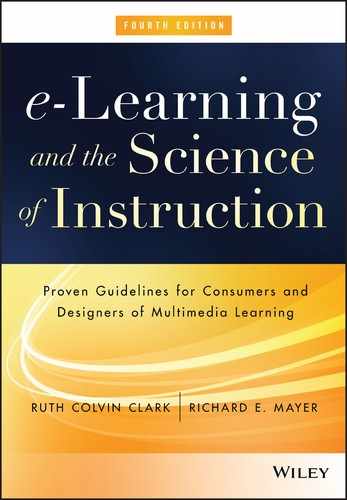CHAPTER 14
Learning Together Virtually
CHAPTER SUMMARY
In the first three editions of e-Learning and the Science of Instruction, we concluded that the research evidence was insufficient to offer firm guidelines regarding optimal use of computer-mediated collaborative learning. However, over the past ten years an empirical research base has grown sufficiently to warrant several principles on when and how to leverage technology for collaborative learning. Optimal learning from online collaboration will depend on appropriate decisions regarding the collaborative group, the technology, and the instructional environment. The principles we include in this chapter address the following questions:
- Which types of collaborative assignments most benefit individual learning?
- What are optimal group sizes, composition, and individual accountability structures for online work?
- When should you use synchronous versus asynchronous collaboration?
- Which online features promote group work?
- How should facilitators promote social presence in online courses?
- What is the best way to set up collaborative controversy assignments?
In the past ten years new technologies, collectively called social media, such as Facebook and Twitter, have exploded in popularity. However, in terms of experimental evidence of what works best in computer-supported collaborative learning (CSCL), there remains a scarcity of experimental studies and guidelines on social media.
What Is Collaborative Learning?
We’ve all heard the saying: “Two heads are better than one” and maybe four heads would be even better when it comes to learning and solving problems! By collaboration we refer to teams of two to six individuals working together to accomplish a goal, often in the form of a project or lesson assignment. Team discussions and assignments during training are a popular instructional approach, both in face-to-face classrooms and online settings. Is learning better when a student studies alone or with others? Does technology (synchronous or asynchronous communication) affect learning? If online collaboration is used, is communication more effective via text chat, audio, or video?
These are some fundamental questions about collaborative learning—also called cooperative learning. Research on collaborative learning in a face-to-face environment has a history of more than sixty years and offers some lessons learned that can be applied to online collaboration. The general consensus is that collaborative learning has excellent potential to improve individual learning. Slavin (2011) states that “Cooperative learning under certain conditions will substantially improve student achievement in most subjects and grade levels” (p. 344). A review by Johnson, Johnson, and Smith (2007) concludes that “Cooperation, compared with competitive and individualistic efforts, tends to result in higher achievement, greater long-term retention of what is learned, more frequent use of higher-level reasoning and meta-cognitive thought, more accurate and creative problem solving, more willingness to take on difficult tasks and persist in working toward goal accomplishment . . . “ (p. 19). Among 138 influences on learning, Hattie (2012) ranked the benefits of cooperative versus individual learning twenty-eighth, with an overall effect size of .59, which is in the medium-to-high range. In other words, there is a healthy body of evidence showing that, under the right conditions, collaborative learning assignments can be more effective than individual learning.
Yet, not all research comparisons show advantages of learning together over learning alone (Nokes-Malach, Richey, & Gadgil, 2015). For example, Kirschner, Paas, and Kirschner (2009) conclude that “there is no clear and unequivocal picture of how, when, and why the effectiveness of individual learning and collaborative learning environments differ” (p. 31). Nihalani, Mayrath, and Robinson (2011) found that, under some conditions, individual learning is actually depressed by collaboration. Specifically, they recommend: “rather than assuming that collaboration is a robust intervention that can be applied to almost any educational context, researchers should explore the boundary conditions of when collaboration not only is not effective but is actually worse than individual instruction” (p. 783). So before you convert all of your learning events into group projects and team events or rush to integrate social media into your training programs, we recommend applying the evidence-based principles we review in this chapter regarding features related to the group, the pedagogy, and the technology. In Table 14.1 we summarize these features.
Table 14.1. Conditions That Influence Collaborative Learning Outcomes.
| Condition | Factors | Guidelines |
| Collaborative Group | Team size Team composition Team collaborative process skills | Size should be small enough to reduce transactional costs but large enough to achieve goal: generally two to four members Enough homogeneity to share a mental model and heterogeneity to contribute diverse perspectives Provide training in specific collaborative processes such as argumentation |
| Pedagogical Environment | Assignment structure Assignment difficulty Social presence | Sufficient structure to ensure productive team processes Sufficient task difficulty to warrant team work Facilitators build and maintain interpersonal connection |
| Technology | Synchronous versus asynchronous Communication modes, e.g., text, audio, video Team process support | Use both synchronous and asynchronous modes based on the collaborative process Evidence to date indicates that communication can be effective with all modes Tools to support a structured process, repositories of relevant materials, annotation features, profiles of team members, knowledge visualization, analysis of balance in arguments |
What Is Computer-Supported Collaborative Learning (CSCL)?
By computer-supported collaborative learning (CSCL) we refer to engagements among teams of two to six members using synchronous and/or asynchronous communication modes in ways that support an instructional goal, such as to produce a product, resolve a case study, discuss a video example, give critiques of other team products, research and resolve a controversy, solve assigned problems, or complete an instructional worksheet.
The first generations of e-learning were designed for solo learning. There were few practical ways to integrate multiple learners or instructors into asynchronous self-study e-learning. However, the emergence of the Web 2.0 in general and social software in particular have made both synchronous and asynchronous connections practical and easy. Table 14.2 summarizes common social software and some of their potential applications to e-learning. Chats, breakout rooms in virtual classrooms (shown in Figure 14.1), wikis (shown in Figure 14.2), blogs, discussion boards (shown in Figure 14.3), and knowledge representation interfaces (shown in Figure 14.4) are among the many technology alternatives for online collaboration.
Table 14.2. Some Online Facilities for Collaborative Learning.
| Facility | Description | Some e-Learning Applications |
| Blogs and Mini-Blogs (Like Twitter) | A website where individuals write commentaries on an ongoing basis. Visitors can comment or link to a blog. Some writers use blogs to organize individual thoughts, while others command influential, worldwide audiences of thousands. | Learning journals Pre-class intros Post-class reflections Informal updates on course skills and related topics Evaluation of course effectiveness Update course content |
| Breakout Rooms | A conferencing facility that usually supports audio, whiteboard, polling, and chat used for small groups in conjunction with a virtual classroom event or online conference. (See Figure 14.1.) | Synchronous team work during a virtual classroom session Small group meetings |
| Chats | Two or more participants communicating at the same time by text. | Role-play practice Group decision making Group project work Pair collaborative study Questions or comments during a virtual presentation |
| Two or more participants communicating at different times. Messages received and managed at the individual’s mail site | Group project work Instructor-student exchanges Pair collaborative activities | |
| Discussion Boards | A number of participants communicate at different times by typing comments that remain on the board for others to read and respond to. (See Figure 14.3.) | Topic-specific discussions Case-study work Post-class commentaries |
| Online Conferencing | A number of participants online at once with access to audio, whiteboard, polling, media displays, and chat. | Guest speakers Virtual classes Group project work |
| Social Networks | Individuals post pages with various media elements and link their pages to selected others. | Finding expertise Display class agendas, objectives, etc. Icebreakers Intersession multimedia work and discussions |
| Wikis | A website that allows visitors to edit its contents. Can be controlled for editing/viewing by a small group or by all. (See Figure 14.2.) | Collaborative work on a project document Ongoing updated repository of course information Collaborative course material construction |
| Collaborative Applications | Applications that offer support and tools for finding, storing, and annotating relevant materials, profiling team members, visualizing arguments, as well as incorporating discussion boards. (See Figure 14.4 for one example.) | Constructive controversy Argumentation Jigsaw Problem-based learning |

Figure 14.1 Synchronous Collaborative Learning with Chat, Audio, Whiteboard in Breakout Room.
From Clark and Kwinn, 2007.

Figure 14.2 Asynchronous Collaborative Learning Using a Wiki.
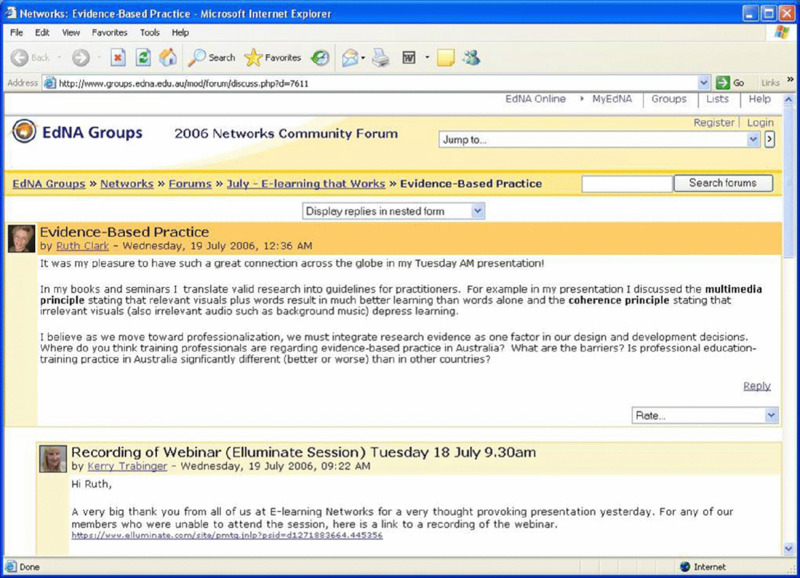
Figure 14.3 Asynchronous Collaborative Learning Using a Discussion Board.
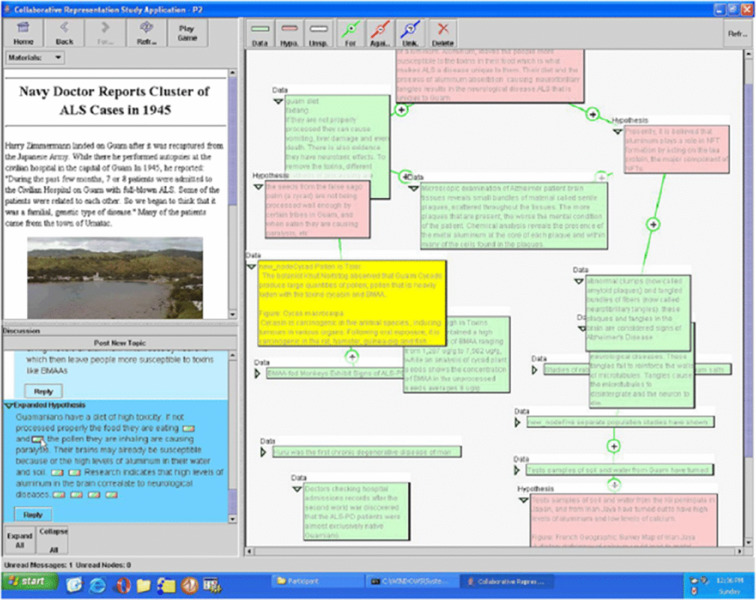
Figure 14.4 A Graphic Interface to Support the Group Problem-Solving Process.
Used with Permission from Suthers, Vatrapu, Medina, Joseph, and Dwyer, 2008.
The past ten years has seen an explosion of new social media such as Facebook and Twitter. However, as we write this chapter, there is little empirical evidence regarding the learning benefits of social media (Aydin, 2012; Hew & Cheung, 2013). As we have learned from a long history of media comparison research, the benefits of social media, just like the benefits of any technology, will depend on how instructional professionals exploit technology features to facilitate learning. For example, collaborative assignments should accommodate learning outcome goals and learner prior knowledge, offer appropriate structure, and facilitate collaborative exchanges. Therefore, we recommend you consider how to adapt lessons learned from both in-person collaboration as well as from online collaboration if you plan to leverage social media for learning.
Diversity of CSCL Research
While collaboration is a popular instructional method and there is currently high interest in social media, what do we actually know about the benefits of computer-mediated collaboration for learning? Research on online collaboration has focused on a wide variety of questions and outcomes. For example, some studies measure individual learning outcomes, while others evaluate the quality of a group project. Alternatively, the research might focus on teams working in a virtual environment under different conditions, such as size of team, background knowledge of team members, type of learning goal, or technology (synchronous or asynchronous) to name a few.
As a result of the diversity of research, evidence on the benefits of online collaboration is mixed. Rather than ask whether collaboration is better for learning than individual work, a more productive question is: Under what conditions do collaborative assignments boost learning? In the remainder of this chapter we will summarize evidence for the following guidelines:
- Consider collaborative assignments for challenging tasks.
- Optimize group size, composition, and interdependence.
- Match synchronous and asynchronous assignments to the collaborative goal.
- Use collaborative tool features that optimize group processes.
- Maximize social presence in online collaborative environments.
- Use structured collaboration processes to optimize team outcomes.
Principle 1: Consider Collaborative Assignments for Challenging Tasks
In Chapter 2, we discussed three forms of cognitive load: essential, extraneous, and generative. Working in collaborative groups has the potential to improve learning outcomes due to distribution of cognitive load over several individuals. In other words, several minds working together on a common goal can be better than one. At the same time, there are cognitive costs to collaboration, which may become a source of extraneous load. For example, during collaboration mental effort must be devoted to listening to the ideas of others, stating one’s own ideas or giving feedback to others, and integrating multiple perspectives. The benefits of collaboration will depend on the degree to which the cognitive benefits exceed the mental costs.
Evidence has shown that collaboration benefits learning of complex tasks, but when faced with easier tasks, solo learning is better. Keep in mind that task complexity is a relative concept and will depend on the background knowledge of the learner, the amount of guidance provided during task completion, as well as the number of variables included in a task assignment. Kirschner, Kirschner, and Janssen (2014) describe several experiments showing that collaborative study leads to better learning when the collaborative task is sufficiently demanding.
In one experiment, Kirschner, Paas, Kirschner, and Janssen (2011) manipulated task complexity by providing support in the form of worked examples (thereby making the tasks less complex) or not providing support. High school students with no background in genetics were provided genetics problems to solve in either three-person groups or alone. Problems were either supported with worked examples or not. Thus, the experiment included four groups: collaborative problem solving with or without worked examples or solo problem solving with or without worked examples. A post-test included problems different from those practiced during problem solving. Figure 14.5 shows the test results. As you can see, for low-complexity tasks (supported with worked examples), learning was better from solo work. In contrast, for high-complexity tasks (no worked examples), collaborative work led to better learning.
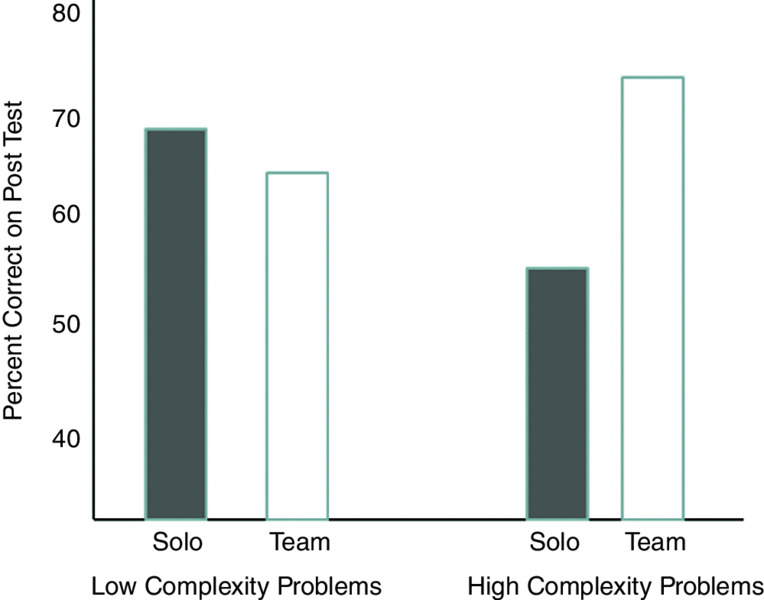
Figure 14.5 Collaborative Versus Solo Learning from High- and Low-Complexity Tasks.
Based on data from Kirschner, Paas, Kirschner, and Janssen, 2011.
In a second study also based on genetics problems, Kirschner, Paas, and Kirschner (2011) controlled task complexity by adjusting the number of information elements included in the problems. Test performance for individuals and collaborative groups working low-complexity problems was the same. However, for high-complexity tasks, test scores were significantly higher for those working collaboratively. Similar results were reported by Sears and Reagin (2013) based on solo and collaborative mathematical problem solving among traditional and accelerated (higher prior knowledge) learners. In this study, the higher prior knowledge students performed worse in groups than when working alone. We see that, in some situations, collaborative learning can degrade learning outcomes compared to solo work. Sears and Reagin conclude: “For students who were able to solve the problem successfully alone, collaboration was more of a hindrance than a benefit to performance “ (p. 1167).
The bottom line: be sure that collaborative groups are assigned challenging problems. The level of problem challenge will depend on (1) the problem itself, (2) prior knowledge of the learners, and (3) the amount of support such as worked examples provided.
Principle 2: Optimize Group Size, Composition, and Interdependence
The ideal group size will depend in part on your instructional goals. A group of four or five members may offer more perspectives to solve a problem. However, the transactional costs (that is, mental resources devoted to communication and group processes) will be greater. Most research studies have used groups of two or three members, although groups of four or five may be better for some purposes. Larger groups not only impose more process costs and time but also may risk unequal participation by group members. Some structured group processes that we will discuss further in the chapter are designed for four members.
Overall, you need to weigh the tradeoffs between smaller and larger groups and make decisions based on the nature of the task assignment and the opportunities for each member of the group to contribute. Larger group assignments should require group interdependence so that they cannot be readily completed by one or two team members. For example, each member of the team can be responsible for one element of a project that is attributed to that person. Alternatively, group presentations can feature each group member. Technology can also make participation salient by graphic displays that quantify the online participation of each team member. If knowledge testing is part of the training process, success criteria can be based on the scores of each team member rather than individual scores. The goal is to make achievement of each member the responsibility of all members (Slavin, 2014).
Groups may be relatively homogeneous or heterogeneous in terms of background knowledge. Canham, Wiley, and Mayer (2012) manipulated participant backgrounds by providing different training approaches to solving probability problems. Half the team members received procedural training that showed how to use a formula to solve the problems. The other half received conceptual training. After receiving background training, pairs were assigned eighteen problems to solve collaboratively through synchronous chat in a virtual workspace. Half of the problems were similar to those illustrated during training and half were different (that is, transfer problems). Pairs were formed that had the same training (both procedural or both conceptual) or had different training (one procedural and the other conceptual). Outcome data included problem-solving accuracy and problem-solving time. Not surprisingly, standard problems similar to those encountered during training were solved more accurately than new problems. Of interest, however, is performance of the homogeneous versus heterogeneous pairs. The homogeneous teams performed better on standard problems, whereas the diverse pairs performed better on transfer problems. The diverse pairs took longer to solve the problems. The research team concludes: “When the goal is to solve a routine set of problems efficiently, then cognitive diversity may be a detriment. When the goal is to be able to apply knowledge flexibly to novel problems, then cognitive diversity in problem-solving groups may be an asset” (p. 428). In a review of research on learning from computer-supported argumentation, Noroozi, Weinberger, Biemans, Mulder, and Chizari (2012) note that there is little consensus on group composition and that multidisciplinary group work is a new and emerging research focus. Based on the Canham, Wiley, and Mayer (2012) research, it is likely that the benefits of homogeneous or diverse groups will depend in part on the outcome goal.
Principle 3: Match Synchronous and Asynchronous Assignments to the Collaborative Goal
The tradeoffs among face-to-face, synchronous and asynchronous communication during a structured group process called “constructive controversy” are summarized in a research review by Noroozi, Weinberger, Biemans, Mulder, and Chizari (2012). Among the experiments they reviewed, 46 percent used asynchronous communications, while 54 percent used synchronous. Only one-third of the reports measured individual learning outcomes. The review team suggests that asynchronous communications offer equal opportunity for all participants to contribute, whereas synchronous environments yield higher integration of individual perspectives. However, synchronous environments with their inevitable time constraints may lead to premature closure as participants jump to conclusions.
Roseth, Saltarelli, and Glass (2011) compared participant perceptions (cooperative or individualistic), completion rates, and learning in collaborative assignments under three conditions: (1) face-to-face, (2) synchronous, and (3) asynchronous. Only 63 percent of the participants completed the assignments in the asynchronous environment, compared to 100 percent in the synchronous environments (face-to-face and synchronous online). Asynchronous environments led to higher individualistic perceptions, while synchronous environments led to greater cooperative perceptions. This experiment also compared synchronous and asynchronous computer communications in text, audio, and video and found no outcome differences among teams using these modes. The research team concludes: “While anytime, anywhere asynchronous computer mediated collaboration may be highly convenient, it may not support the relational processes required by cooperative learning procedures” (p. 815).
Many instructional portals, such as that shown in Figure 14.6, incorporate both synchronous and asynchronous capabilities. In a typical portal, repositories of course resources, discussion boards, and participant profiles are accessible in asynchronous modes. For goals that benefit from synergy, synchronous collaborative capabilities are available. For example, as pre-work to a course, each participant might post his or her expertise profile and review an assigned scenario. A synchronous session might clarify the desired outcome goals and discuss potential solution approaches. Asynchronous individual work can locate and store relevant resources in a common repository and contribute to a knowledge map or matrix. A synchronous discussion might integrate various findings and develop an outline for a unified product, to be followed by individual asynchronous work. The instructor’s challenge is to leverage the functionality of both synchronous and asynchronous features to maximize learning goals. In particular, use a combination of synchronous and asynchronous events to space practice, as discussed in Chapter 13. Consider using synchronous sessions for goals that benefit from synergy and higher social presence and in situations when high completion rates are essential. Reserve asynchronous technology for activities best completed individually at an individual pace, such as contributing to a topic knowledge map, reflecting and commenting on peer work, or engaging in a discussion board.
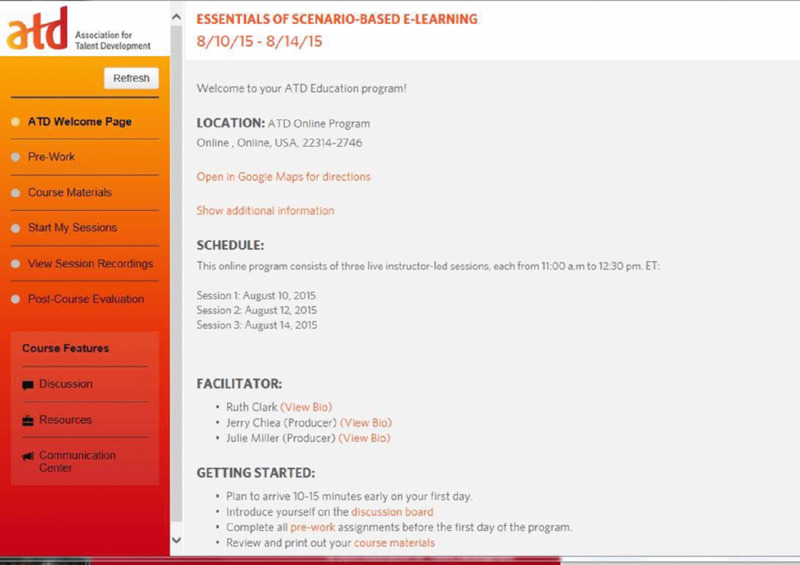
Figure 14.6 A Learning Portal with Synchronous and Asynchronous Functionality.
ATD Learning Portal© 2015. Used with permission of Association for Talent Development, Alexandria, Virginia, USA.
Principle 4: Use Collaborative Tool Features That Optimize Team Processes and Products
A number of research studies have focused on factors that facilitate team working processes and outputs. Technology functionality can support many of these, including search and storage of relevant information, annotations of documents including comments or questions, synchronous and asynchronous communication forums, visual knowledge representations such as knowledge maps, automated participant online activity ratings, profiles to store expertise of individual members, and pattern recognition of and feedback on content such as an imbalance in confirmatory arguments versus counter arguments (Kirschner, Kirschner, & Janssen, 2014).
For example, Figure 14.7 shows a screen capture from Knowledge Forum, designed specifically to support domain-general constructive controversy or argumentation. The left-hand menu incorporates the main stages in the collaborative process, including articulating a theory or solution, identifying needed knowledge, storing, summarizing, and sharing new information, identifying aspects of the theory not supported by the information, reconstructing a more balanced theory, and integrating theories from others.

Figure 14.7 The Menu Structure of This Collaborative Application Supports Argumentation Processes.
With Permission of Knowledge Innovation and Technology and Learning in Motion.
Principle 5: Maximize Social Presence in Online Collaborative Environments
Social presence refers to the feeling of connection learners have with the instructor and with other learners. Although it is not always leveraged, a face-to-face classroom offers many opportunities for high levels of social presence. Online environments—especially asynchronous environments—require extra attention by the instructor or team leader to establish and sustain social presence. Sung and Mayer (2012b) conducted a factor analysis on survey data asking online learners what online behaviors helped them connect with others. Their analysis recommends the following behaviors for online facilitators:
- Give timely responses to online posts that include expressions of respect for student time and effort invested.
- Share beliefs and values along with work and professional interests and experiences related to the course domain.
- Maintain an open environment in which everyone feels free to express opinions and give constructive feedback.
- Refer to learners by name when replying to online contributions.
Note that these recommendations are based on input from learners and are not necessarily linked to learning achievement. Future research can compare the learning outcomes from lessons that do and do not apply these guidelines.
Principle 6: Use Structured Collaboration Processes to Optimize Team Outcomes
As we discussed previously, the type of task assignment given to collaborative teams is a major factor influencing either group product quality or individual learning. Assignments that are too simple won’t motivate meaningful dialog. Assignments that are too general or too vague, such as “work together to discuss the case study,” won’t offer enough structure to encourage effective collaboration. While there are a number of collaborative learning environments that may be effective, in this section we review structured controversy—a type of argumentation that has been successfully used in both face-to-face and computer-supported collaborative classes and can be applied to any issue that lends itself to two or more perspectives.
Argumentation involves developing alternative positions on an issue supported by facts. It includes several phases such as making a claim or stating a theory, searching and posting supporting evidence, stating alternative theories, and integrating opposing or multiple perspectives.
How to Implement Structured Controversy
In Figure 14.8 we illustrate one way to set up a structured controversy collaborative process. Learners are assigned to heterogeneous teams of four. The teams are presented with an issue or problem that lends itself to two or more perspectives. The teams divide into pairs, each taking either the pro or con, and develop a strong position for their perspective to include relevant facts and evidence. Later, the team of four reconvenes and one pair presents their argument to the other. After the presentation, the receiving pair must state back the argument adequately to the presenting pair to demonstrate their understanding of the presentation team’s position. Then, the pairs reverse roles. As a result, all team members develop an understanding of both perspectives. After the argumentation, the full team moves into a synthesis phase, wherein the opposing perspectives are merged into a single reasoned position.
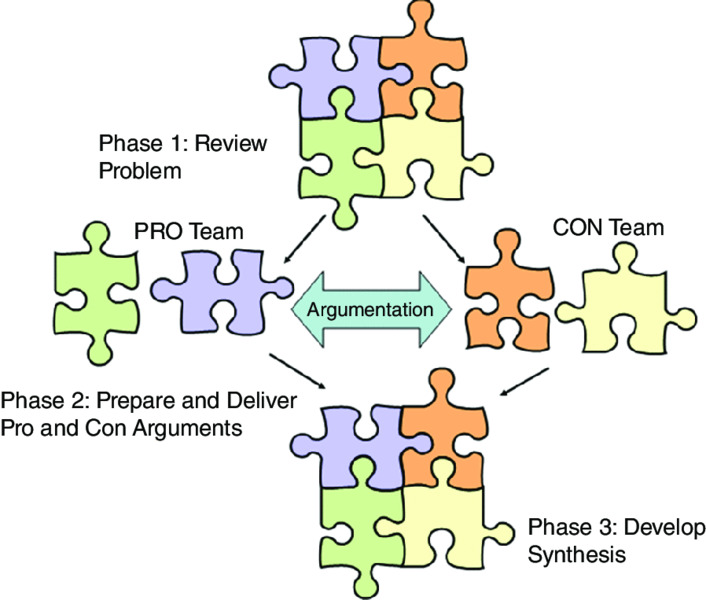
Figure 14.8 Structured Argumentation Collaborative Learning Process.
Comparisons of the structured controversy method with several alternative structures, including traditional debates, individual learning, or groups that stressed concurrence, found the structured controversy method more effective for individual learning, with effect sizes ranging from .42 to .77 (Johnson & Johnson, 1992).
The authors recommend the following elements for successful constructive controversy:
- Ensure a cooperative context where the goal is understanding the opposing views, followed by a synthesis of perspectives.
- Structure groups to include learners of mixed background knowledge and ability.
- Provide access to rich and relevant information about the issues.
- Ensure adequate social skills to manage conflict.
- Focus group interactions on rational arguments.
Adapting Structured Controversy to Computer-Mediated Collaboration
Roseth, Saltarelli, and Glass (2011) compared student perceptions, task completion, and learning for structured controversy among seven conditions: face-to-face team work; synchronous team work using either text, audio, or video; and asynchronous team work using either text, audio, or video. One hundred percent of the participants in the synchronous environments (face-to-face and online) completed the process, whereas only 63 percent of participants in the asynchronous environment completed the assignment. Among those who completed the assignment, learning was equivalent. The researchers caution against over-reliance on asynchronous environments for collaborative learning.
More research is needed on the learning outcomes of online collaborative assignments. In a review of fifteen years of research on computer-supported structured controversy research, Noroozi, Weinberger, Biemans, Mulder, and Chizari (2012) found that only one-third of the studies measured individual learning outcomes. It is likely that some phases of the process will benefit from synchronous work while other phases are well adapted to asynchronous tools, such as the example shown in Figure 14.7.
Don’t assume that your learners will automatically be able to engage in effective argumentation. Quality argumentation is a skill that must be trained and guided in learners. Schworm and Renkl (2007) found that video-modeled worked examples of argumentation discussions, coupled with questions that required learners to identify the various stages illustrated in the video, facilitated the acquisition of argumentation skills. Yeh and She (2010) reported that online synchronous argumentation templates, as illustrated in Figure 14.7, produced better arguments and learning compared to a group learning the same science concepts without argumentation support.
What We Don’t Know About Collaborative Learning
In 2005, Jonassen, Lee, Yang, and Laffey concluded their review of computer-supported collaborative learning (CSCL) research as follows: “More is unknown about the practice than is known. CSCL will constitute one of the pivotal research issues of the next decade” (p. 264). As we write this chapter ten years later, sufficient evidence has accumulated to support the principles we included in this chapter. Still there are many questions left unanswered. No doubt specific guidelines for productive collaboration will require adaptation based on the desired learning outcome, the composition of the learning teams, and the mix of collaborative multimedia features used. We look forward to future evidence that shapes the principles we have included in this edition.
Chapter Reflection
- What mix of collaborative tools does your organization use for team learning, project assignments, or knowledge management?
- How might you adapt online tools such as those shown in this chapter to optimize team work in your organizational setting?
- Suppose you are working with a global team to design and develop a multimedia tool that includes functionality for knowledge management, knowledge sharing, team problem solving, and formal and informal learning. Describe the features of your ideal tool.
COMING NEXT
One of the unique features of asynchronous e-learning is the ability to let learners make choices. Navigational devices such as menus and links grant learners options over pacing, lesson topics, and instructional methods such as practice. How do these levels of freedom affect learning? Who benefits most from learner control? What kinds of interfaces are most effective for learner control? These are some of the issues we review in Chapter 15.
Suggested Readings
- Canham, M.S., Wiley, J., & Mayer, R.E. (2012). When diversity in training improves dyadic problem solving. Applied Cognitive Psychology, 26, 421–430. An interesting research report on ways that team composition may affect team outcomes.
- Kirschner, P.A., Kirschner, F., & Janssen, J. (2014). The collaboration principle in multimedia learning. In. R.E. Mayer (Ed.), The Cambridge handbook of multimedia learning (2nd ed.; pp. 547–575). New York: Cambridge University Press. A comprehensive and readable review of evidence regarding online collaboration.
- Nokes-Malach, T., Richey, J.E., & Gadgil, S. (2015). When is it better to learning together? Insights from research on collaborative learning. Educational Psychology Review, pp. 1–12. A review on collaboration that summarizes the benefits and drawbacks of collaboration for learning.
- Noroozi,. O., Weinberger, A., Biemans, H.J.A., Mulder, M., & Chizari, M. (2012). Argumentation-based computer supported collaborative learning (ABCSCL): A synthesis of fifteen years of research. Educational Research Review, 7, 79–106. A review of evidence specifically on constructive controversy in online environments.
- Slavin, R.E. (2014). Making cooperative learning powerful. Educational Leadership, 72(2), 22–26. Written for teachers, this short article offers five key suggestions for maximizing the learning benefits of collaborative learning.
CHAPTER OUTLINE
- Learner Control Versus Program Control
- Three Types of Learner Control
- Tradeoffs to Learner Control
- Do Learners Make Good Instructional Decisions?
- Calibration Accuracy: Do You Know What You Think You Know?
- How Does Calibration Affect Learning?
- How Common Is Overconfidence Among Learners?
- Do Learners Like Instructional Methods That Lead to Learning?
- Psychological Reasons for Poor Learner Choices
- Principle 1: Give Experienced Learners Control
- When to Give Learner Control
- Principle 2: Make Important Instructional Events the Default
- Principle 3: Consider Alternative Forms of Learner Control
- Shared Control
- Advisement
- Recommender Systems
- Principle 4: Give Pacing Control to All Learners
- Principle 5: Offer Navigational Support in Hypermedia Environments
- Use Headings and Introductory Statements
- Use Links Sparingly in Lessons Intended for Novice Learners
- Use Course and Site Maps
- Provide Basic Navigation Options
- The Bottom Line
- What We Don#x2019;t Know About Learner Control
